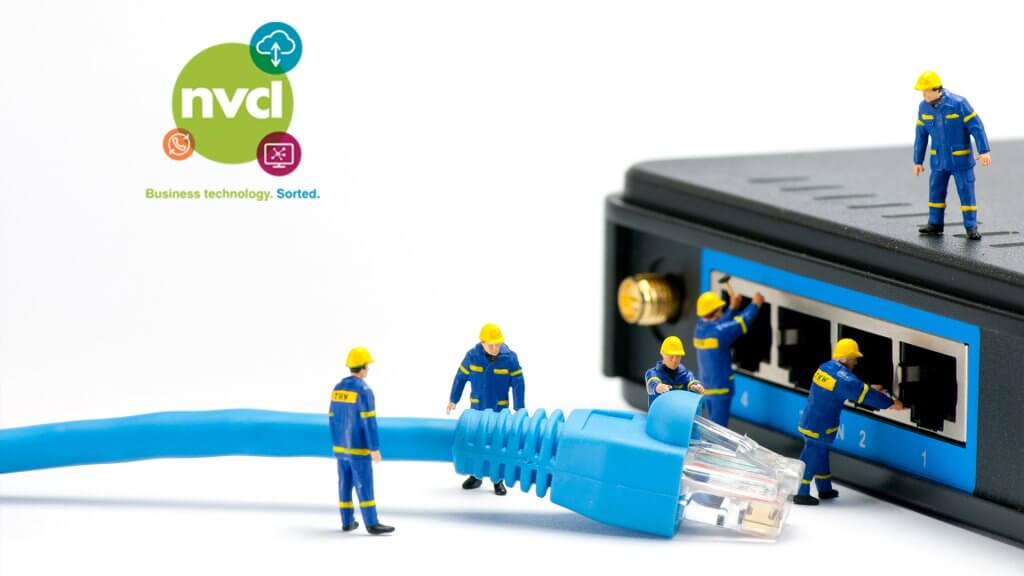Building a Resilient SME: The Role of Technology in Ensuring Business Continuity
Small and medium-sized enterprises (SMEs) face a unique set of challenges and opportunities in maintaining operations through unforeseen disruptions. Resilience, the ability to withstand and quickly recover from such events, has become a key factor for success. As businesses navigate through the complexities of the current economic environment, technology emerges as a critical ally. This piece explores how SMEs can leverage technological solutions to build resilience, ensuring business continuity against a backdrop of uncertainties. From risk assessment to the implementation of disaster recovery plans, technology provides the tools necessary for SMEs to not only survive but thrive. We delve into the essential components that constitute a resilient business and how technology acts as the backbone of robust business continuity strategies.
The Foundation of Resilience: Understanding Business Continuity
Business continuity encompasses the processes and procedures an organisation implements to ensure that essential functions can continue during and after a disaster. For SMEs, understanding and integrating these processes is vital to sustaining operations in challenging times. Resilience is not about reacting to disruptions after they occur; it’s about having a proactive plan that addresses potential threats and vulnerabilities. Technology plays a pivotal role in this planning phase, offering solutions that automate backups, ensure data integrity, and facilitate communication. By adopting a strategic approach to business continuity, SMEs can create a framework that supports operational integrity, customer trust, and long-term viability.
Assessing Risks and Preparing for the Unexpected
The first step towards resilience is the identification and assessment of potential risks that could impact business operations. This requires a thorough analysis of internal and external factors, from cyber threats to natural disasters. For SMEs, the challenge often lies in the limited resources available for such assessments. However, technology offers a way forward, providing tools that can help in identifying vulnerabilities, evaluating the potential impact of different scenarios, and prioritizing risks based on their severity. By leveraging data analytics and simulation software, SMEs can gain insights into how disruptions could affect their business and prepare accordingly. This preparation not only involves implementing protective measures but also training staff to respond effectively to incidents. Through careful risk assessment and planning, SMEs can establish a culture of preparedness that minimizes the impact of unexpected events and ensures a swift return to normal operations.
Technology at the Heart of Resilience: Tools and Solutions
In an era defined by rapid technological advancement, the adoption of cutting-edge tools is crucial for SMEs aiming to enhance their resilience. These technologies range from cloud computing services that ensure data is accessible and secure, regardless of physical office status, to cybersecurity measures that protect against data breaches and cyber-attacks. Additionally, mobile technologies enable remote work, ensuring that businesses can continue operations even when traditional office spaces are unavailable.
One of the most significant technological solutions for SMEs is the integration of business continuity software. This software automates the process of backing up critical data and systems, ensuring they can be quickly restored in the event of a disruption. It also facilitates the seamless communication among team members, stakeholders, and customers, which is essential during a crisis.
Moreover, the use of data analytics tools allows SMEs to predict potential disruptions and understand customer behaviour during different scenarios, enabling better preparedness and a more tailored response strategy. By investing in these technologies, SMEs can build a robust infrastructure that not only supports business continuity but also contributes to a competitive advantage in their respective markets.
The Role of Automated Secure File Transfers in Business Continuity
In the context of ensuring business continuity, the security and efficiency of data transfers cannot be overlooked. File transfer automation software becomes a cornerstone for SMEs in protecting their data integrity during regular operations and in the face of unexpected disruptions. By automating the process of sending and receiving files, businesses minimize the risk of human error, a common source of data breaches and loss.
File transfer automation software ensures that critical financial reports, customer information, and operational data are securely transferred according to pre-defined workflows, without requiring manual intervention. This not only enhances security but also ensures that data is consistently available where and when it’s needed, a critical component of business continuity.
Moreover, the use of file transfer automation in an SME’s continuity planning means that in the event of a network failure or cyber-attack, automated processes can, ensuring that operations can continue with minimal disruption. It also plays a crucial role in disaster recovery efforts, as automated backups and transfers are essential for restoring lost data.
Incorporating file transfer automation into an SME’s technological toolkit not only safeguards against data loss and breaches but also streamlines operations, allowing the business to maintain a steady flow of information even in challenging times. This level of preparedness and operational integrity is what distinguishes resilient businesses in today’s competitive environment.
Implementing a Robust Disaster Recovery Plan
A robust disaster recovery plan is essential for SMEs to ensure they can quickly resume operations after a significant disruption. This plan involves a detailed strategy for restoring IT systems, data, and infrastructure that are critical to business operations. The cornerstone of a successful disaster recovery plan is the identification of key business processes and the technology that supports them, ensuring that these elements can be recovered or restored with minimal downtime.
Technology plays a pivotal role in disaster recovery, with cloud-based backup solutions offering a secure and efficient way to store copies of critical data off-site. These solutions enable SMEs to quickly regain access to their data in the event of physical damage to their premises or IT equipment. Furthermore, virtualization technology allows businesses to create digital replicas of their physical servers and workstations, which can be activated in a virtual environment to ensure continuity of operations.
Regular testing and updating of the disaster recovery plan are crucial to ensure its effectiveness. Simulated disaster scenarios can help identify weaknesses in the plan and provide insights into how response procedures can be improved. For SMEs, leveraging technology to automate aspects of the disaster recovery process can significantly reduce the complexity and resources required to maintain and test the plan.
Conclusion: Embracing Technology for a Resilient Future
For SMEs, building resilience is an ongoing process that requires a strategic approach to technology adoption and integration. By understanding the foundation of business continuity, assessing risks, and implementing robust disaster recovery plans, SMEs can safeguard their operations against disruptions. The role of technology, particularly through tools like file transfer automation software and cloud-based solutions, is indispensable in achieving this resilience.
As SMEs navigate the challenges and opportunities of the digital age, it is clear that technology is not just an enabler of business continuity but a critical driver of growth, innovation, and competitiveness. Embracing technology, therefore, is not an option but a necessity for SMEs aiming for a resilient and prosperous future.








